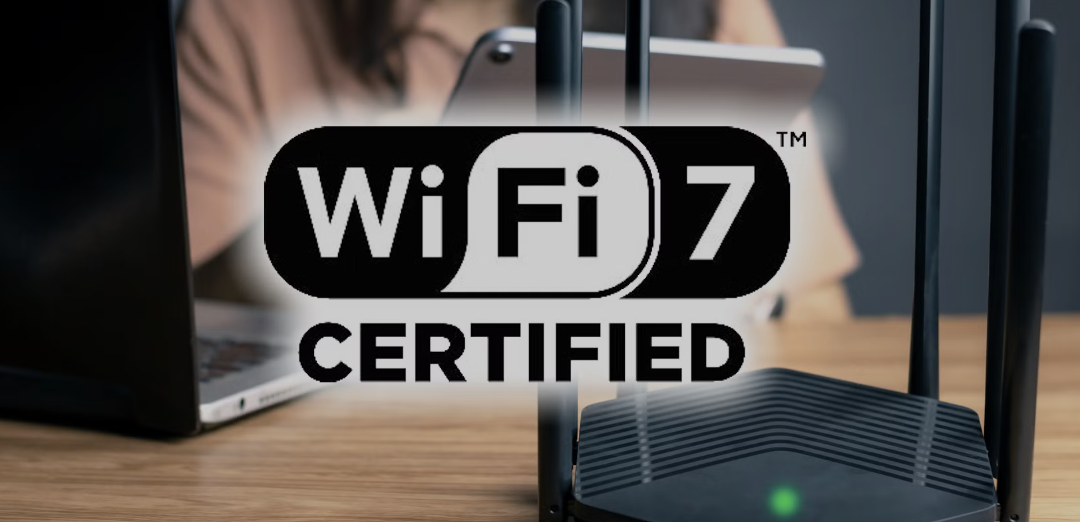In an increasingly connected world, our reliance on fast, reliable internet has never been higher. From streaming high-definition video to gaming, virtual reality, and IoT devices, the demand for better wireless technology continues to soar. Enter Wi-Fi 7 — the latest generation of Wi-Fi technology that promises to revolutionize how we connect to the internet.
What is Wi-Fi 7?
Wi-Fi 7, also known as 802.11be, is the next step in the evolution of Wi-Fi technology, succeeding Wi-Fi 6 (802.11ax). Officially launched in 2024, Wi-Fi 7 brings a host of new features and improvements designed to address the growing demand for higher speeds, greater efficiency, and more stable connections, especially in environments with multiple devices.
But what exactly does Wi-Fi 7 offer? Let’s break it down:
1. Faster Speeds: A Quantum Leap in Throughput
One of the most exciting features of Wi-Fi 7 is its impressive speed capabilities. Wi-Fi 7 can theoretically deliver speeds of up to 46 Gbps under ideal conditions — significantly faster than Wi-Fi 6’s 9.6 Gbps. While such speeds may seem excessive for home use right now, they are crucial for future-proofing networks, particularly in environments where large data transfers, 4K/8K video streaming, or virtual/augmented reality (VR/AR) experiences are common.
Wi-Fi 7 achieves these speeds by utilizing the 160 MHz and 320 MHz channels in the 6 GHz band, which allows for broader bandwidth, faster data transmission, and less congestion on the network.
2. Enhanced Efficiency with Multi-Link Operation (MLO)
One of the standout features of Wi-Fi 7 is Multi-Link Operation (MLO). This feature allows devices to connect to multiple channels simultaneously, improving both reliability and performance. In practice, this means your device can send and receive data over different frequencies at the same time, significantly reducing latency and preventing congestion on any single channel.
For example, if you’re streaming a movie on your smart TV and playing an online game on your laptop, MLO ensures that the traffic for each application is distributed across different channels, ensuring smooth performance on both devices without interference.
3. Lower Latency for Real-Time Applications
For applications like online gaming, video calls, and remote work tools, latency — the time it takes for data to travel from the source to the destination — is critical. Wi-Fi 7 has been optimized to lower latency, making it ideal for real – time applications.
With the introduction of features like Faster-Access-Point (FAP) algorithms and improved coordination between devices, Wi-Fi 7 aims to provide consistent and near-instantaneous response times, which will be especially beneficial for VR and AR applications that rely on real-time interaction.
4. Increased Spectrum Capacity: A Bandwidth Bonanza
Wi-Fi 7 introduces the use of the 6 GHz band, a frequency range that was opened up by the Federal Communications Commission (FCC) in the U.S. for unlicensed use. This 6 GHz spectrum provides a vast amount of additional bandwidth, reducing network congestion, and enabling faster speeds. More spectrum means more room for devices to operate without interfering with one another, a crucial factor as the number of connected devices in homes, offices, and cities continues to grow.
Wi-Fi 7 also supports 1024-QAM (Quadrature Amplitude Modulation), which improves data density and allows for more data to be sent at once. This feature is especially useful in crowded environments like apartment buildings or office spaces where many devices are fighting for bandwidth.
5. Better Performance in Crowded Environments
Speaking of crowded environments, Wi-Fi 7’s performance in high-density areas is another key improvement. As more and more devices crowd our homes, offices, and public spaces, network congestion becomes a significant issue. Wi-Fi 7 includes advanced spatial reuse techniques that allow multiple devices to communicate on the same channel without causing interference. This is particularly useful in places like stadiums, airports, and urban centers where dozens, if not hundreds, of devices are vying for a slice of the wireless spectrum.
6. Backwards Compatibility with Wi-Fi 6 and Wi-Fi 5
One of the most user-friendly features of Wi-Fi 7 is its backwards compatibility. Devices that support Wi-Fi 7 will still be able to communicate with devices that support older standards like Wi-Fi 6 (802.11ax) and Wi-Fi 5 (802.11ac). This means that even if your home or office hasn’t upgraded all devices to Wi-Fi 7 yet, the new routers and access points will continue to work with your existing gear.
7. Greater Security with WPA4
As with every new iteration of Wi-Fi technology, security is a top priority. Wi-Fi 7 comes with WPA4 (Wi-Fi Protected Access 4), which builds on the security foundations laid by WPA3. WPA4 enhances encryption protocols to protect against more sophisticated cyber threats, ensuring your network is safer than ever. This is especially important as we continue to integrate more smart devices into our homes, which often serve as entry points for hackers.
When Will Wi-Fi 7 Be Available?
Wi-Fi 7 routers and devices are expected to start hitting the market in 2024. However, widespread adoption will take time. As with previous Wi-Fi generations, it will likely take a few years before Wi-Fi 7 becomes the norm in homes and businesses. Nevertheless, early adopters can expect to see the first wave of Wi-Fi 7-capable devices—such as smartphones, laptops, and routers—available within the next few months.
Why You Should Care About Wi-Fi 7
While Wi-Fi 7 may seem like a “nice-to-have” for some users, its advanced features make it essential for anyone who relies on a high-performance wireless network. Whether you’re an avid gamer, a remote worker, a content creator, or someone with a smart home full of connected devices, the benefits of Wi-Fi 7 are hard to ignore.
Faster speeds, lower latency, and better efficiency mean that your online experience will be smoother, more reliable, and future-proofed for the increasing demands of the digital world. As we continue to evolve in our use of wireless technology, Wi-Fi 7 offers a glimpse into a faster, more connected future.
Final Thoughts
Wi-Fi 7 is poised to take wireless connectivity to new heights, offering faster speeds, improved efficiency, and better performance in crowded environments. As the internet of things continues to expand and more devices demand bandwidth, Wi-Fi 7 will play a crucial role in shaping the future of our connected world. So, if you’re looking for a wireless network that can keep up with the demands of tomorrow, Wi-Fi 7 is the upgrade you’ve been waiting for.
Stay tuned for more updates on Wi-Fi 7 devices and how this exciting new technology will continue to change the way we connect!




